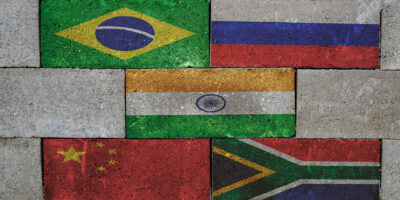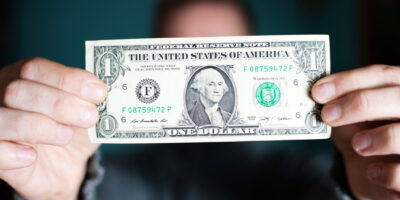Pricing the Anonymity of Banknotes
Banknotes are useful. Not only do they provide their owner with a standard set of payments services, they also offer financial anonymity. This post introduces the idea of trying to price the anonymity component.
To help think about why we might want to price anonymous banknote usage, I’m going to make an analogy. Imagine Walmart sells special suits that allow people to become invisible. While most Walmart customers always pay for the goods they find in the aisles, a few try these invisible suits on, grab a bunch of stuff, and sneak out without paying. The product is weaponized and turned against its provider.
I’m going to argue that this same sort of weaponization characterizes the modern provision of banknotes. The government, like Walmart, provides citizens with a privacy-enhancing product: cash. Because its coins and banknotes don’t leave a paper trail, they act as a financial cloak. In the same way that an invisible suit can be used to evade Walmart’s checkout counter, a government-issued banknote can be turned against its provider by allowing users to avoid paying for the government services they have consumed.
Walmart may wish to do something about the weaponization of invisible suits, especially if the costs imposed by abusers of suits begin to exceed the amount of income the company gets from buyers of invisible suits. One option Walmart has is to stop selling the product. No one would fault them for putting an end to an unprofitable business line. Invisible-suit aficionados could just shop elsewhere.
But what if Walmart is society’s only provider of invisibility? This complicates things. While a few bad apples regularly abuse Walmart’s invisible suits by using them to steal, many others use the suits in legitimate ways. So while a decision to stop selling invisible suits might improve Walmart’s finances, it might also make society worse off.
This same tension crops up in the debate over the future of cash. A ban on cash would help reduce tax evasion and improve government finances. But since banknotes are the only anonymous financial product, and no other entity is permitted to provide banknotes, a ban would put an immediate end to financial privacy. Because privacy is something people value, public welfare would be reduced.
Say Walmart does the noble thing. It continues to stock invisible suits to meet the public’s demand for privacy. But the company still has costs it must meet, including wages, inventories, and rent, and with a steady loss of payments facilitated by the weaponization of invisible suits, that hurdle becomes much harder to clear. To plug deficits, Walmart may have to ask all its rule-abiding customers to pay a little bit more for the goods they buy.
But an across-the-board price increase hardly seems fair. Those abiding by Walmart’s rules are being asked to make up for a shortfall that is entirely the fault of suit-stealing rule breakers. Honest shoppers who don’t generally like to use invisible suits will be particularly furious — and who can blame them? They are being asked to pay more for the goods they hold dear in order to support the use of a single product they never cared for much anyway.
This same lack of fairness plagues modern tax systems. The government needs to fund (via taxes) the services it provides, but the presence of cash allows for cheating. The funding gap that emerges must be made up for by all of the remaining citizens — the non-cheaters. So taxes, or the price of government services, will be higher in the presence of cash than in a world without cash. Non-cheaters, particularly those who don’t use cash, will feel betrayed because they must pay higher taxes to support the ongoing provision of a product they don’t necessarily value.
Walmart may have a better option. Instead of increasing the price of all goods to make up for the behavior of a few invisible-suit users, it can just raise the price of suits high enough to make up for the shortfall. So customers who like invisibility end up bearing the costs imposed by thieves who weaponize suits. This targeted approach seems like a fairer path for Walmart to take. It releases a large chunk of its customer base from the obligation of offsetting the invisibility-induced shortfall while still giving those who value the privacy provided by invisible suits the option of buying them.
If setting a higher price for invisibility is the best option for Walmart, what about modern banknote-providing governments? In the same way that Walmart increases the price of invisible suits to offset the shortfall created by those who weaponize them, a government can introduce a levy on cash users. Rather than placing this levy on all banknote denominations, it might target high-denomination banknotes instead. The idea is that bulky $1s and €5s may be less useful in large-scale tax evasion than $100s and €200s.
By setting a levy or negative interest rate of 5 to 10 percent per year on high-denomination notes (there are various ways to do this), the government would be able to earn a large-enough stream of revenue to help offset the shortfall created by cash-using tax evaders. The effect would be a lower tax bill for all non-cheaters, both for those who generally do not use cash and those who use only small-denomination notes ($1 and €5s). In effect, the anonymity provided by $100s and €200s would now be directly paid for by the users of those $100s and €200s. Unlike an all-out ban on banknotes, financial anonymity would still be provided.
I think it makes sense for the Walmart in our thought experiment to give anonymity pricing a shot. Maybe governments should entertain the idea, too.











